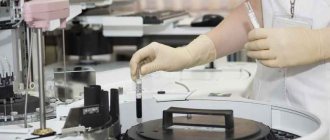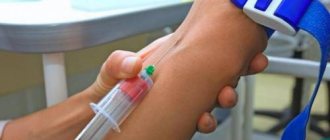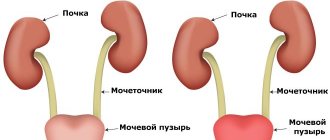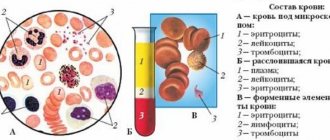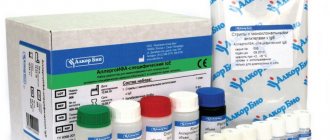Purpose and circulation of creatinine
All chemical compounds circulating in the body can be divided into those that are constantly included in the metabolism in the form of various metabolites that transform into each other, and those substances that belong to the group of waste waste.
The latter are subject to mandatory removal from the body. Blood creatinine is considered one of the few representatives of waste substances that exhibit toxic properties to tissues. Since its formation occurs constantly, it must be excreted just as regularly. The central organs and tissues that regulate its metabolism are the kidneys, liver and muscles. Creatinine metabolism is designed in such a way that primary formation occurs in muscle tissue. It contains creatine phosphate, which breaks down during muscle contractions to produce a powerful flow of energy needed to perform movements and loads. Creatine phosphate is formed in the liver by combining the amino acid creatine with a phosphoric acid residue (phosphorylation process), from where it is sent through the bloodstream to the muscles. After the breakdown of creatine phosphate, creatinine is formed, which is excreted by the kidneys in urine.
Important to remember! The reasons for the increase in creatinine may be due to a violation of any of the stages of its circulation and metabolism!
Urea what is it
Urea is a metabolic product in the liver, which is formed during the breakdown of proteins into amino acids. Another name for this substance is urea, which is more often used to name fertilizer in agriculture. During the breakdown of urea, ammonia is formed, which is then converted by the liver into less toxic urea, which is determined by a blood test.
Urea and ammonia contain nitrogen. Many people believe that urea and urea nitrogen are interchangeable concepts, since urea contains this component. Both urea and urea nitrogen are a "transport method" the body uses to get rid of excess nitrogen.
Urea is secreted by the liver into the blood and then goes to the kidneys, where it is filtered and goes into the urine. Since this process is continuous, some amount of urea can always be detected in the blood. Most diseases that affect the kidneys or liver can affect the amount of urea in the blood. If an increased amount of urea is produced by the liver or if the kidneys do not work normally and cannot completely filter waste from the blood, an increase in urea occurs in the blood. If there is significant liver damage and disease, this may reduce carbamide production. In this case, it is possible to detect a reduced level.
Analysis for creatinine and urea
If a person has an increase in urea and creatinine during a blood test, this indicates a disturbed diet, and sometimes means the presence of severe pathologies in the body.
The function of urea is to neutralize ammonia, and creatine is a product of the breakdown of muscle tissue.
What analysis determines?
The level of creatinine and urea is detected using a biochemical blood test.
This diagnostic method allows you to detect substances that circulate in the body and are metabolic products of the main components. For analysis, you need to give a blood sample from a vein.
This manipulation is performed by a medical professional. Before the test, the patient adheres to a diet for 3 days and avoids increased physical activity.
When the values of these substances increase, it is necessary to conduct a general urine test.
Norm of components during research
Creatinine and urea are end products of metabolism. Their level shows the functioning of the body, and changes in indicators may indicate pathology. Uric acid is formed from nitrogenous bases and is capable of neutralizing ammonia. The precursor to creatinine is a component that is formed in muscles. This process is associated with the release of large amounts of energy.
Creatinine
The amount of the substance depends on gender and age. In healthy people, creatinine in the blood is in the range of indicators presented in the table:
This substance is the result of protein metabolism in the body, which is excreted in the urine after breakdown in the liver. The norm of creatinine in men is higher than in women because they have more muscle mass. Children have an immature urinary system in the kidneys and therefore their values differ and reflect the condition of the kidneys over a long time.
Urea in the blood
The values that the substance circulates in the body has are presented in the following table:
The normal level of urea depends on the age of the patient, but does not differ in any way by gender, so it is the same in women and men. They reflect the filtration capacity of the urinary system. Urea in the blood is responsible for removing purine bases from the human body. Once in the kidneys, it neutralizes ammonia and the level depends on the concentration of the substance.
Reasons for the increase
These substances are metabolic products of the main components of the body, so an increase in their quantity indicates a violation of functional processes.
However, an increase in creatinine is not a sign of illness, but most often is an indicator of a special diet high in protein.
An elevated uric acid level is a dangerous symptom, as it indicates kidney disease.
Creatinine
The following reasons for high concentration are identified:
- consuming large amounts of animal proteins;
- strong physical activity;
- pregnancy;
- vegetarianism;
- insufficient water intake;
- renal failure;
- pathologies of the endocrine system;
- injury or rupture of muscle tissue;
- exposure to radiation.
Normal creatinine
Most of the creatinine leaves the body in the urine. The kidneys are responsible for filtering it. In this case, a small amount of creatinine remains in the body. The following indicators are considered the norm:
- 45-105 µmol/liter in children under 7 years of age.
- 27-83 µmol/liter in adolescents.
- 44-80 µmol/liter in female adults
- 74-111 µmol/liter in adult males.
The reason for the difference in indicators for women and men is physiological characteristics.
Women often have less muscle mass, so their creatinine levels should be lower than men.
Reasons for the increase
An increase in creatinine in the blood is caused by pathological and physiological reasons. Physiological ones include:
- regular physical activity;
- food with a high protein content;
- recent injuries.
A person with elevated creatinine levels does not need treatment under these circumstances. For pathological reasons, creatinine levels increase due to metabolic failure. Increased creatinine production is caused by the following reasons:
- Endocrine diseases. Such diseases include acromegaly - increased production of growth hormone.
- Kidney problems. Creatinine increases in kidney failure, when the organ cannot cope with plasma filtration at the same level.
- Radiation poisoning.
- Dehydration of any nature.
Biochemical blood test creatinine
Many patients who seek advice from doctors of various specialties are interested in the question of whether the results of all tests are really important and how many studies need to be done so that the doctor can make an accurate diagnosis.
Why do you take a blood test for creatinine?
Thus, a study of more than 20 indicators involves a biochemical blood test: creatinine, urea, uric acid in it are important studies, because they characterize the ability of the kidneys to cleanse the blood of metabolic products and remove them from the body. Accordingly, the doctor will prescribe these tests in the presence of any disease of the kidneys and urinary system, suspected diseases of the blood vessels, autoimmune inflammation, or suspected metabolic disorders in the body.
The study of creatinine is important because this substance is filtered through the glomeruli of the kidneys and excreted from the body without undergoing reabsorption (readsorption) in the initial sections and secretion in the final sections of the kidney tubules. That is why the creatinine indicator and its level directly depend on the preservation of renal blood flow and kidney function
How should a patient prepare for analysis?
Blood from a vein is used for analysis, and it is best to collect material for research in the morning and on an empty stomach. It is advisable to follow the usual drinking regimen and diet before the study, but for 3-5 days immediately before visiting the laboratory, do not use diuretics, which accelerate the glomerular filtration rate and reduce the level of creatinine in the blood serum while simultaneously increasing this substance in the urine. Eating the usual amount of protein does not in any way distort the result of this test, although you should avoid drinking alcohol.
What does creatinine level depend on?
It must be remembered that a biochemical blood test, in which creatinine describes the state of kidney function, is an analysis that is performed in almost any laboratory. Accordingly, an increase in the concentration of this substance is observed when the condition of the kidneys worsens and becomes the most objective indicator that characterizes the rate of renal blood flow and glomerular filtration, respectively.
A decrease in creatinine levels is found with a vegetarian diet, during pregnancy, and also during treatment with corticosteroid drugs.
Diet
With normal kidney and liver function, consumed foods with a high protein content do not cause the accumulation of creatinine and urea in the blood, and when they appear, they are immediately excreted along with urine. There is a certain category of food products, the consumption of which reduces the concentration of creatinine and urea in the blood.
To achieve this effect, it is recommended to adhere to the following rules:
- do not abuse foods containing high amounts of protein compounds (meat, fish, legumes, nuts, chicken eggs);
- drink as much water as possible;
- give up alcohol and carbonated drinks;
- periodically consume a decoction of rosehip, Sudanese rose, compotes based on black and red currants, viburnum, cranberries, which stimulate kidney function and cleanse the blood of metabolic products;
- include cereal porridges containing a high level of fiber in your diet (wheat, barley, corn, pearl barley).
In addition, do not forget that nutrition should be balanced. It is necessary to consume a sufficient amount of fresh fruits, vegetables and herbs so that the body is saturated with natural vitamins and minerals. At least once a year, donate blood for a biochemical analysis to determine the level of creatinine and urea in order to promptly detect the development of a possible disease and prevent serious consequences for your health.
Norms of urea and creatinine in pregnant women, causes of deviations
Urea and creatinine are examined as part of a biochemical blood test for approximately the same purpose - to determine the excretory function of the kidneys. These compounds are even formed through similar processes - urea is the end product of protein breakdown, creatinine is synthesized in muscle tissue also from nitrogen-containing substances. Often these two indicators are combined under the general name “blood nitrogen”.
The norm of urea in a woman before pregnancy is approximately 4.5 mmol/l, creatinine - 73 µmol/l. When carrying a child, these values gradually decrease, but very slightly - before childbirth (when the difference is most striking), the urea level is 4.0 mmol/l. The drop in creatinine is more significant – to 47 µmol/l.
Why does “blood nitrogen” change in pregnant women?
The decrease in the amount of nitrogenous substances in the blood of pregnant women is due to the fact that the processes of protein synthesis (the formation of new fetal tissues) exceed the rate of its breakdown. In addition, in the case of creatinine, its formation is highly dependent on physical activity and muscle work. During the normal daily routine of a pregnant woman, her muscle work is at a lower level, which explains the decrease in the level of this blood indicator in pregnant women.
An increase in urea and creatinine levels often occurs simultaneously (doctors in this case talk about increased blood nitrogen or azotemia). In pregnant women, this is often caused by kidney damage due to gestosis and eclampsia. Also, the cause of this condition may be an incorrect diet of a pregnant woman (consuming large amounts of protein foods), glomerulonephritis, urolithiasis, tumors of the kidneys and urinary tract.
In addition, in a number of conditions, an individual increase in creatinine levels is possible - the amount of urea remains normal or increases very slightly. This phenomenon is accompanied by a number of endocrine pathologies - diabetes mellitus, increased activity of the thyroid gland (hyperthyroidism) and pituitary gland (acromegaly). A lot of creatinine enters the blood during the breakdown of muscle tissue, so its increase can be caused by massive injuries or muscular dystrophies.
Various types of kidney damage often become a complication during pregnancy - long-standing chronic diseases can become aggravated and worsened, or new ones can arise. This poses a threat to the health of the expectant mother and child, so doctors closely monitor the amount of nitrogen in the blood - urea and creatinine.
How are tests performed?
Measurement of urea and creatinine levels in two biological media is currently used
A biochemical blood test is taken on an empty stomach, and the day before it is recommended to follow the patient’s usual diet. Indicators are determined in serum or blood plasma, which is taken from the elbow. If blood plasma is used for diagnostic testing, an antiplatelet drug is added to the test tube in advance.
To conduct a biochemical urine test, a special large container is required in the medical laboratory. The patient is asked to collect all urine excreted during the day into this container. To avoid the introduction of foreign impurities, the container should be kept in the refrigerator during the entire duration of the study.
What do analysis deviations indicate?
The level of creatinine in the blood increases in diseases such as renal disorders, hyperthyroidism, and gigantism. A decrease in the level of this substance in the urine is possible in women in the second half of pregnancy, as well as during diets that promote a sharp decrease in body weight.
Creatinine in urine increases with the following pathologies:
diabetes mellitus; dysfunction of the gonads; infections.
The same happens with increased physical activity. But the decrease in the indicator indicates the following:
muscle atrophy; paralysis; kidney diseases; leukemia.
The carbamide (urea) content also varies depending on the condition of the body. An increase in its levels in the blood is observed in the following cases:
consumption of foods containing protein; anemia; coma caused by diabetes; coma caused by liver dysfunction; crash syndrome; kidney dysfunction; adrenal insufficiency; states of stress or shock; heart attack; bleeding from the stomach or heart; poisoning, in particular, phenol, chloroform, mercury.
The amount of urea in children with cirrhosis of the liver, insufficient kidney function, and during convalescence after illness is reduced. The same indicators are observed with insulin therapy, the use of anabolic steroids, and testosterone.
The amount of urea in urine increases in the following cases:
fever; increased activity of the thyroid gland; postoperative recovery.
The same tests appear when taking certain medications or a protein diet. The level of urea decreases in children, pregnant women, and during the recovery period. With kidney and liver diseases, the amount of urea in urine also decreases.
In order for tests for urea and creatinine to be reliable, you must strictly adhere to all doctor’s recommendations for their implementation. In this case, they will show the exact result of the body’s activity and make it possible to prescribe effective treatment.
Creatinine level: when it rises
The following indicators are considered normal:
- in children older than one year to 10 years – 27-62 µmol/kg;
- teenagers from 10 to 19 years old – 44-88;
- adult women under 60 years old – 53-97;
- adult men under 60 years old – 80-115;
- elderly women from 60 to 90 years old – 53-106;
- elderly men from 60 to 90 years old – 71-115.
Deviations from these indicators may be downward or upward. Low creatinine levels occur during fasting, taking hormonal contraceptives, or during the first trimesters of pregnancy. Most often it occurs in women.
An increase in creatinine in the blood occurs with metabolic disorders:
- radiation sickness;
- renal failure;
- damage to the endocrine system (gigantism and similar conditions);
- mechanical or surgical damage to muscle tissue.
This phenomenon can also be due to natural causes: eating predominantly protein foods, excessive physical activity, and a large amount of muscle mass.
Biochemical blood test creatinine and urea
Published in Hypertension
A biochemical study involves the patient taking, among other things, a blood test for urea and creatinine. The data obtained can greatly help in establishing the presence of diseases, many of which lead to disability or death in the absence of adequate care.
Urea
Urea is a low-toxic product; it is formed in the liver as a result of the neutralization of ammonia. While in the blood, it is freely filtered by the kidneys, but then passively reabsorbed. This process is enhanced by a decrease in the rate of urine passage through the nephrons.
The danger of its increase in the blood is that some substances accumulate along with it and act as toxins.
In addition, the high osmoticity of urea leads to the fact that its excess causes edema.
An increase in this substance in plasma is called uremia and is observed in the following processes:
We also recommend that you read:
- Kidney diseases (glomeruloneritis, tuberculosis and amyloidosis of the kidney, pyelonephritis, use of a number of medications).
- Diseases accompanied by hemodynamic disturbances (bleeding, heart failure, obstruction to the outflow of urine, rapid loss of fluid of any origin, shock).
- Excess urea in the blood (cachexia, leukemia, use of drugs containing androgens or corticosteroids, fever, excessive exercise, eating a high protein diet, malignancy).
A decrease in blood urea can be caused by:
- Pregnancy.
- Decreased activity of substance synthesis in the liver.
- Poisoning (arsenic, phosphorus).
- Starvation.
- Kidney dialysis.
- Acromegaly.
Normal urea levels range from 2.8 to 7.5 mmol/l, and in urine - 250−570 mmol/l. The normal level in a newborn’s blood serum is from 1.4 to 4.3 mmol/l.
Creatinine in blood and urine
Creatinine appears in the body as a result of the metabolism of creatine, a substance necessary for metabolism in muscle tissue. It is found in almost all liquid media of the body - blood, urine, sweat, bile, cerebrospinal fluid. Under normal conditions, it is constantly produced by hepatocytes and excreted by the kidneys.
High levels of urea and creatinine in the blood serum indicate the presence of renal failure. But the latter increases faster in this pathological condition. Measuring these substances helps assess the state of glomerular filtration.
An increase in creatinine may occur under the following conditions:
- any type of kidney failure;
- acromegaly;
- damage to muscle tissue during surgery or injury;
- radiation exposure;
- dehydration;
- overproduction of the thyroid gland.
A decrease in creatinine is observed during gestation, fasting, and a decrease in muscle mass, including as a result of degenerative processes.
Determination of creatinine in urine is also very important for assessing the patient's condition. This greatly expands the ability to assess kidney function.
Its norm in urine is:
High creatinine in urine is called creatininuria, and occurs when:
- increasing physical activity;
- hypothyroidism;
- excess protein in food consumed;
- diabetes mellitus;
- acromegaly.
In such conditions, there is a parallel decrease in its levels in the blood.
Creatinine clearance
To clarify the diagnosis of renal failure, the Rehberg test is performed. It allows you to estimate creatinine clearance. That is, a calculation is made of how much of a given substance is excreted per unit of time. This requires a 24-hour urine test.
During the collection, the patient is warned not to overload himself with physical activity or drink alcoholic beverages or meat. The water regime remains normal.
This method has advantages due to its high sensitivity compared to conventional tests. It helps determine the initial stage of renal failure, while a biochemical blood test indicates a decrease in filtration even when the function of these organs is impaired by 50%.
What do these indicators mean?
Creatinine is a product of metabolic biochemical reactions of protein breakdown.
Its formation occurs continuously and is associated with metabolic and energy processes in striated and smooth muscle cells. Muscle contraction requires a large amount of energy, and the number of muscles in an adult exceeds 650. This is why muscle contractility requires a powerful source of power to supply the muscles in case of an emergency.
The main source of energy substrate is the content of creatine phosphate, which, under the action of the body's enzymatic systems, is converted into another compound. The result is that the energy obtained during the biochemical reaction is used for life, and the residues are excreted in the urine.
Urea is a biologically active result of the breakdown of nitrogen-containing proteins. With prolonged transformation of proteins, ammonia is neutralized - a dangerous toxic substance that depresses the central nervous system and causes damage to neurons and other cells of the body. In case of renal dysfunction and renal failure, its amount may increase.
A blood test for urea and creatinine must be performed on every patient admitted to the hospital, regardless of his disease. Such an examination allows us to identify hidden pathologies.
The site provides reference information for informational purposes only. Diagnosis and treatment of diseases must be carried out under the supervision of a specialist. All drugs have contraindications. Consultation with a specialist is required!
During a biochemical blood test, indicators of inflammation, heart damage, osteoporosis, as well as pigments, bile acids, homocysteine, urea, uric acid, creatinine and many other parameters are determined. From this article you will learn what these indicators mean, what diseases require their values to diagnose, and what an increase or decrease in these indicators, calculated during a blood test, means.
Alpha-2-macroglobulin is a protein produced in the liver and performs the function of transporting growth factors and biologically active substances, as well as stopping blood clotting, dissolving blood clots, and stopping complement. In addition, the protein is involved in inflammatory and immune reactions and ensures a decrease in immunity during pregnancy. Doctors in practice use determination of the concentration of alpha-2-macroglobulin as a marker of liver fibrosis and prostate tumors.
Indications for determining the concentration of alpha-2-macroglobulin are the following conditions:
- Assessing the risk of liver fibrosis in people suffering from chronic diseases of this organ;
- Kidney diseases;
- Pancreatitis;
- Duodenal ulcer.
Normally, the concentration of alpha-2-macroglobulin in men over 30 years of age is 1.5 - 3.5 g/l, and in women over 30 years of age - 1.75 - 4.2 g/l. In adults 18 - 30 years old, the normal level of alpha-2-macroglobulin in women is 1.58 - 4.1 g/l, and in men - 1.5 - 3.7 g/l. In children 1 - 10 years old, the normal concentration of this protein is 2.0 - 5.8 g/l, and in adolescents 11 - 18 years old - 1.6 - 5.1 g/l.
An increase in the level of alpha-2-macroglobulin in the blood is observed under the following conditions:
- Chronic liver diseases (hepatitis, cirrhosis);
- Diabetes;
- Nephrotic syndrome;
- Psoriasis;
- Acute pancreatitis;
- Malignant tumors;
- Pregnancy;
- Alpha-1 antitrypsin deficiency;
- Cerebral infarction;
- Physical exercise;
- Taking estrogen hormones.
A decrease in alpha-2-macroglobulin levels is typical for the following conditions:
- Acute pancreatitis;
- Myocardial infarction;
- Lung diseases;
- Artificial blood circulation;
- Disseminated intravascular coagulation syndrome (DIC syndrome);
- Multiple myeloma;
- Prostate cancer;
- Rheumatoid arthritis;
- Preeclampsia in pregnant women;
- The use of streptokinase and dextran drugs.
Antistreptolysin-O (ASL-O) is an antibody to group A beta-hemolytic streptococcus, and is an indicator of streptococcal infection in the human body (sore throat, scarlet fever, glomerulonephritis, rheumatism, etc.). Accordingly, determination of the ASL-O titer is used to confirm the streptococcal nature of the infectious disease and distinguish rheumatism from rheumatoid arthritis.
Indications for determining ASL-O in the blood are the following diseases:
- Inflammatory joint diseases (to distinguish rheumatism and rheumatoid arthritis);
- Angina;
- Scarlet fever;
- Glomerulonephritis;
- Myocarditis;
- Any infections, the causative agent of which may presumably be streptococcus (pyoderma, otitis media, osteomyelitis, etc.).
Normally, ASL-O activity in the blood of adults and adolescents over 14 years of age is less than 200 U/ml, in children 7–14 years old it is 150–250 U/ml, and in children under 7 years of age it is less than 100 U/ml.
An increase in ASL-O activity in the blood is observed under the following conditions:
- Rheumatism;
- Erysipelas;
- Scarlet fever;
- Acute diffuse glomerulonephritis;
- Myocarditis;
- Any streptococcal infections (angina, otitis media, pyoderma, osteomyelitis).
Reduced levels of ASL-O activity are normal and indicate the absence of streptococcal infection in the body. Otherwise, low ASL-O activity is not characteristic of any pathologies.
C-reactive protein (CRP) is an acute phase protein that is synthesized in the liver and is a marker of inflammation in the body. An increase in the level of CRP occurs at the initial stages of any infectious or inflammatory disease, myocardial infarction, injury or tumor that destroys surrounding tissue.
Indications for determining the level of CRP in the blood are the following conditions:
- Assessment of the activity of the pathological process and the effectiveness of therapy for collagenosis (lupus erythematosus, scleroderma, etc.);
- Acute and chronic infectious and inflammatory diseases (to assess the activity of the process and the effectiveness of therapy);
- Assessment of the severity of the condition in case of necrosis of any tissue (for example, myocardial infarction, stroke, burns);
- Tumors;
- Assessing the effectiveness of antibiotics used;
- Evaluation of the effectiveness of amyloidosis therapy;
- Assessment of the risk of cardiovascular complications in patients with atherosclerosis, diabetes mellitus and those on hemodialysis.
Normally, the concentration of CRP in the blood is less than 5 mg/l.
An increase in the concentration of CRP in the blood is observed in the following conditions:
- Rheumatic diseases (systemic lupus erythematosus, vasculitis, scleroderma, rheumatoid arthritis, rheumatism, etc.);
- Transplant rejection reaction;
- Amyloidosis;
- Disintegration of tissues of any organ (pancreatitis, pancreatic necrosis, malignant tumors, burns, myocardial infarction, lung, kidney, etc.);
- Bacterial and viral infections (meningitis, tuberculosis, postoperative complications, sepsis in newborns, etc.);
- Neutropenia (low levels of neutrophils in the blood).
When deciphering the results, it is wise to adhere to simple rules. An increase in the concentration of CRP to 10 – 30 mg/l is typical for viral infections, cancer, rheumatic diseases and low-grade chronic inflammatory processes. An increase in CRP concentration to 40 – 200 mg/l is characteristic of bacterial infections, rheumatoid arthritis and tissue breakdown. But an increase in CRP to 300 mg/l and above is typical for severe infections, sepsis and burns.
A decrease in the level of CRP below any level does not have any significance for identifying pathological processes in the body.
Rheumatoid factor (RF) is an antibody to its own immunoglobulin class G, namely its Fc fragment. The formation of such antibodies is typical for autoimmune diseases (rheumatoid arthritis), systemic rheumatic pathologies (lupus erythematosus, Sjogren's syndrome), inflammatory processes in various organs (hepatitis, sarcoidosis), chronic infections and cryoglobulinemia.
Indications for determining rheumatoid factor in the blood are the following conditions:
- Rheumatoid arthritis (determining the activity of the process, confirming the diagnosis, etc.);
- Autoimmune diseases (lupus erythematosus, Sjogren's syndrome);
- Chronic inflammatory and infectious diseases.
Normally, rheumatoid factor in the blood should be no more than 30 IU/ml.
An increase in the level of rheumatoid blood factor is typical for the following conditions:
- Rheumatoid arthritis;
- Sjögren's syndrome;
- Scleroderma;
- Dermatomyositis;
- Waldenström's macroglobulinemia;
- Sarcoidosis;
- Crohn's disease;
- Systemic lupus erythematosus;
- Chronic infectious and inflammatory diseases of any organs and systems (syphilis, tuberculosis, hepatitis, malaria, infectious mononucleosis, bacterial endocarditis, etc.);
- Viral infections (cytomegaly in newborns, etc.).
There cannot be a decrease in the level of rheumatoid factor, since normally this protein should not be in the blood and its absence indicates the well-being of the body in relation to autoimmune, rheumatic, chronic inflammatory and infectious diseases. More about rheumatoid factor
Indications for determining the level of alpha1-antitrypsin in the blood are the following conditions:
- Development of pulmonary emphysema under the age of 45 years or in the absence of risk factors (smoking, occupational hazards);
- Chronic obstructive pulmonary disease;
- Bronchiectasis without an obvious causative factor;
- Asthma not controlled by medications;
- Liver damage of unknown origin (hepatitis, cirrhosis);
- Necrotizing panniculitis;
- Vasculitis with the presence in the blood of antibodies to the cytoplasm of neutrophils (c-ANCA);
- Preventive examination of people with a family predisposition to bronchiectasis, emphysema, liver disease and panniculitis.
Normally, the concentration of alpha-1-antitrypsin in the blood of adults 18 - 60 years old is 0.78 - 2.0 g/l (780 - 2000 mg/l), and in people over 60 years old - 1.15 - 2.0 g/l (1150 – 2000 mg/l). In newborn children, the protein concentration is slightly higher than in adults - 1.45 - 2.7 g/l (1450 - 2700 mg/l), but after reaching the age of 1 year its level decreases to adult values.
- Acute or chronic inflammatory or infectious process;
- Hepatitis;
- Rheumatic diseases (rheumatoid arthritis, systemic lupus erythematosus);
- Damage or death of tissue (burns, operations, injuries, myocardial infarction, lungs, kidneys, etc.);
- Malignant tumors;
- Third trimester of pregnancy.
Why do creatinine and urea tests?
A blood and urine test for creatinine is done to diagnose the following diseases:
acute renal failure - to clarify the degree of kidney damage; increased thyroid function; severe liver dysfunction; inflammation of the lungs, bronchi; blockage of the ureters; acromegaly and gigantism; diabetes; intestinal obstruction; muscle dystrophy; burns, especially if a significant part of the body is affected.
Note that an increase in the amount of creatinine in the blood is the result of a pronounced impairment of kidney function. Sometimes creatinine levels can exceed 2500 micromoles per liter. Therefore, if you suspect such diseases, it is necessary to do tests as early as possible.
In addition, creatinine is determined for the following purposes:
assessing the effect on the kidneys of drugs with nephrotoxic effects; protein synthesis monitoring; assessment of kidney activity before and after surgery; control over kidney activity during pregnancy, the development of tumors, and diseases of the urogenital area.
A blood and urine test for urea is carried out primarily to determine the excretory capacity of the kidneys. The analysis is prescribed for diagnosis:
hepatitis A; liver cirrhosis; poisoning; kidney diseases; diseases of the heart and blood vessels.
Blood collection for analysis is done on an empty stomach: fasting time is at least eight hours. In this case, the patient is recommended to drink only mineral water without gas. Urea and creatinine in the blood and urine also depend on the food consumed. Before examinations, patients should not consume large amounts of protein foods. If the patient is taking medications, the doctor should be told about this. In this case, the drinking regime should be normal: limiting fluid, as well as increasing its amount, is not allowed.
Where to go?
If the attending physician has prescribed a test for creatinine and blood urea, then the patient should go to him with the results. If there are minor changes, they will most likely offer to retake the analysis, since errors in the calculations are possible.
If the concentration changes again or is greatly increased, the doctor will refer the patient to a nephrologist, a specialist in kidney diseases. He will figure out the reasons for what is happening, conduct an additional examination, prescribe the necessary treatment, and give recommendations.
source
Increased urea and creatinine in the blood
Elevated levels of these indicators in the blood indicate renal failure. Of course, the dog has a chance to survive, especially if all other indicators are normal and treatment is started on time. Look for the cause of kidney failure. This may be an inflammatory process in the kidneys caused by infection, injury due to the presence of urolithiasis. Or is it all about urinary tract obstruction (urolithiasis, tumors, prostatitis, etc.)
Treatment is prescribed depending on the cause of the disease. There is no point in delaying this because kidney failure is not a harmless disease and can lead to serious intoxication.
The diet of dogs suffering from renal failure should be low in protein, sodium and phosphorus. It is best to feed ready-made food for dogs with renal failure during treatment. I know for sure that eukanuba have such food. It is very difficult to properly balance natural in such diseases.
In what cases is such an analysis performed?
The concentration of urea in the blood is checked for all citizens admitted to the hospital.
hypertension; diabetes; pathological condition of the liver, characterized by a violation of its functions (cirrhosis, hepatitis); rheumatic diseases; diseases of the digestive system, in which the absorption of food ingredients is reduced (gluten enteropathy); suspicions of infectious and inflammatory kidney diseases; detection of abnormalities in clinical urine analysis during screening; assessment of renal function in chronic renal failure (hemodialysis is indicated when the urea concentration is above 30 mmol/l); sepsis and shock condition of the patient;



